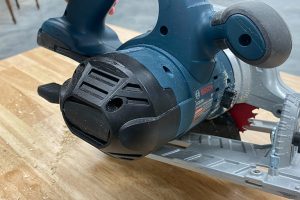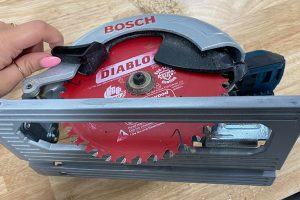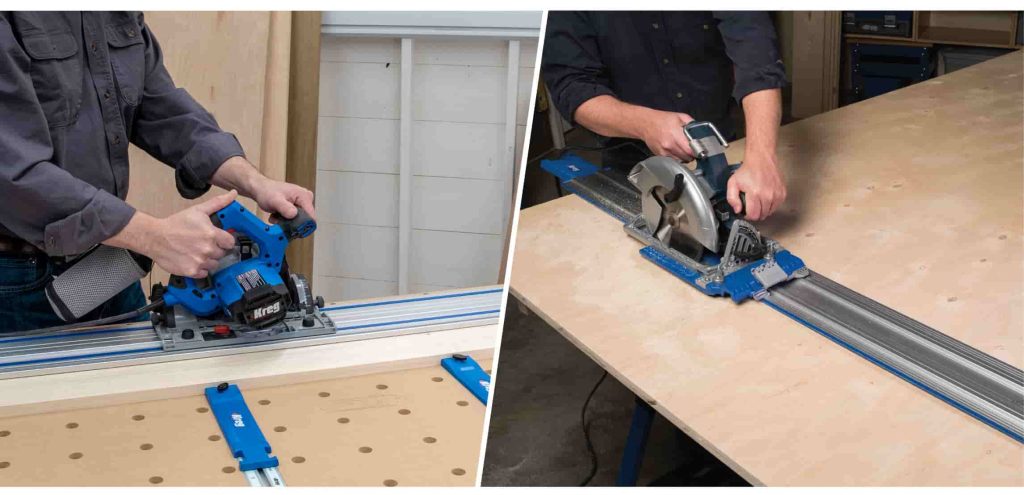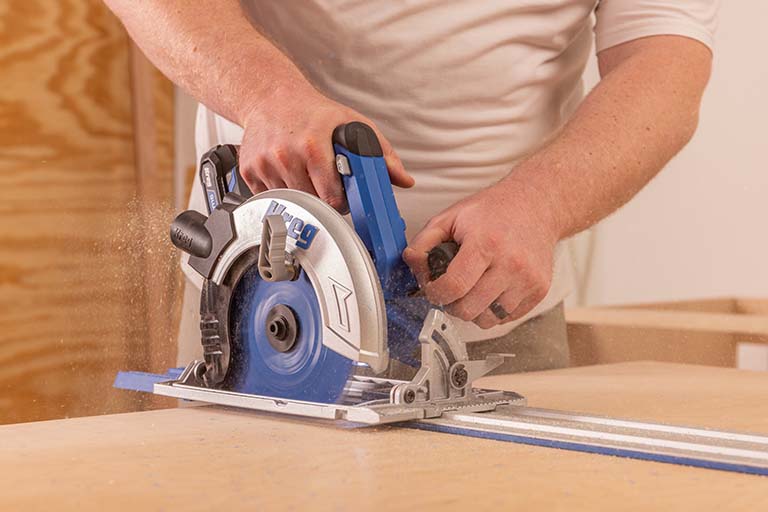Can a beginner use a circular saw?
Yes, a circular saw is relatively easy for beginning woodworkers to learn. While the circular saw may seem intimidating at first glance, with the right knowledge and guidance, even beginners can confidently and successfully use this versatile power tool.
We’ll walk you through the step-by-step process of using a circular saw, ensuring that you have the necessary skills to tackle your woodworking projects with precision and confidence.
![]()
Understanding the Circular Saw
The circular saw is a powerful and versatile tool used in woodworking and construction projects. To use it effectively and safely, it’s crucial to have a good understanding of its basic components and the different types available.
Basic Components of a Circular Saw:
A circular saw consists of several key components:
Motor
The motor powers the saw and determines its cutting capacity and speed.

Blade
Circular saw blades have sharp teeth designed for cutting through various materials, such as wood, metal, or masonry.

Handle
The handle provides a grip for the operator to control the saw during use.

Trigger
The trigger is a switch that controls the power to the saw. It is usually located on the handle.

Base Plate
Also known as the shoe or sole plate, the base plate provides stability and acts as a guide for the saw when making cuts.

Different Types of Circular Saws and Their Uses:
Circular saws, with their versatility and cutting prowess, come in various types tailored to specific woodworking needs. Each type offers distinct advantages, catering to a range of projects.
Sidewinder or Direct Drive Circular Saws
Sidewinder circular saws feature a motor positioned along the blade, granting them a compact and lightweight design. These powerhouses are a staple for general woodworking tasks, perfect for both DIY projects and professional endeavors. Their maneuverability, coupled with adequate power, makes them a reliable choice for tasks like cutting plywood, boards, and framing lumber. Whether you’re crafting furniture or tackling home renovations, the sidewinder circular saw is your reliable companion.
Worm-Drive Circular Saws
Worm-drive circular saws flip the script with their motor positioned behind the blade, delivering enhanced torque and power. These robust tools find their calling in heavy-duty applications, such as framing and construction work. Their ability to tackle tough materials, coupled with the power to cut through thick lumber effortlessly, makes them a popular choice for people working in demanding environments. From building structures to crafting support beams, the worm-drive circular saws are your torque-infused partners.
Trim Saws
For tasks demanding precision and finesse, enter the trim saws. These compact and lightweight circular saws are designed for precision cuts in trim work and finish carpentry. Their smaller size, combined with accurate cutting capabilities, makes them ideal for tasks like creating clean miters, executing intricate joinery, and ensuring seamless edges in delicate woodworking projects.
Cordless Circular Saws
Powered by rechargeable batteries, these saws offer a cord-free experience, making them a favorite for remote and outdoor projects. While suitable for light to medium-duty tasks, their convenience knows no bounds. From building decks in the backyard to crafting wooden sculptures at the far reaches of your workshop, cordless circular saws grant you the flexibility to create wherever your imagination takes you.
Plunge-Cut Circular Saws
Plunge-cut circular saws introduce a unique capability – the ability to plunge the blade into the workpiece. This feature makes them ideal for making cuts in the middle of a material, as opposed to starting from the edge. These saws excel in tasks that require precise internal cuts, such as creating openings for vents, electrical outlets, or other intrusions in the material. Their plunge-cutting ability ensures clean, accurate results in scenarios where precision is non-negotiable.
![]()
Cutting with a Circular Saw – A 10 Step Guide
Is using a circular saw hard?
No, using a circular saw is not difficult. While, it may be intimidating at first, just follow the step-by-step process below to achieve your desired results.
-
Be safe
What is the first rule of using the circular saw? Always wear appropriate safety gear, including safety glasses, ear protection, and work gloves. Avoid loose clothing and secure long hair.
-
Prepare the work area
Clear the area of any debris or obstacles. Ensure there is adequate lighting and a stable work surface.
-
Measure and mark
Use a measuring tape and pencil to mark the cut line on the workpiece. Double-check your measurements to ensure accuracy.
-
Adjust the cutting depth
Refer to the user manual to see how to adjust the cutting depth. Loosen the depth adjustment lever or knob and set the desired depth according to your marked line. Tighten the lever or knob to secure the depth.
-
Set the cutting angle (if necessary)
If you need to cut at an angle, adjust the bevel angle of the saw. Loosen the bevel adjustment lever or knob and tilt the base to the desired angle. Tighten the lever or knob to lock the angle in place.
-
Secure the workpiece
Use clamps to secure the workpiece firmly. This prevents movement and ensures a stable cutting surface.
-
Start the saw
Hold the saw with both hands and position the blade just above the workpiece, ensuring that the blade is clear of any obstructions. Align the blade with the marked cutting line.
-
Begin the cut
Activate the saw’s power switch or trigger and allow the blade to reach full speed before starting the cut. Apply gentle forward pressure on the saw and guide it along the cutting line. Let the saw’s blade do the work — don’t force it through the material.
-
Maintain control
Keep a firm grip on the saw throughout the cut and maintain a steady pace. Avoid sudden movements or excessive force.
-
Complete the cut
Once you’ve reached the end of the cut line, release the trigger and allow the blade to come to a complete stop before lifting the saw from the workpiece.
For more detailed info, check out our beginner’s guide for getting straight cuts with a circular saw.
And check out this video on how to get great results from your circular saw:
How do you cut straight with a circular saw?
Do you need a guide for a circular saw? When it comes to achieving straight and accurate cuts, a circular saw guide can be a game-changer. A guide significantly enhances your precision and eliminates the guesswork when keeping your saw on the cutline, allowing you to tackle projects with confidence.
A circular saw guide acts as a fence or a track that keeps the saw on a straight path, ensuring consistent and smooth cuts. It helps maintain a steady cutting line, prevents the saw from veering off course, and minimizes mistakes and uneven edges.
By using a circular saw guide, you can confidently tackle projects that require straight cuts. It saves you time, minimizes material wastage, and ultimately helps you achieve professional-level results.









